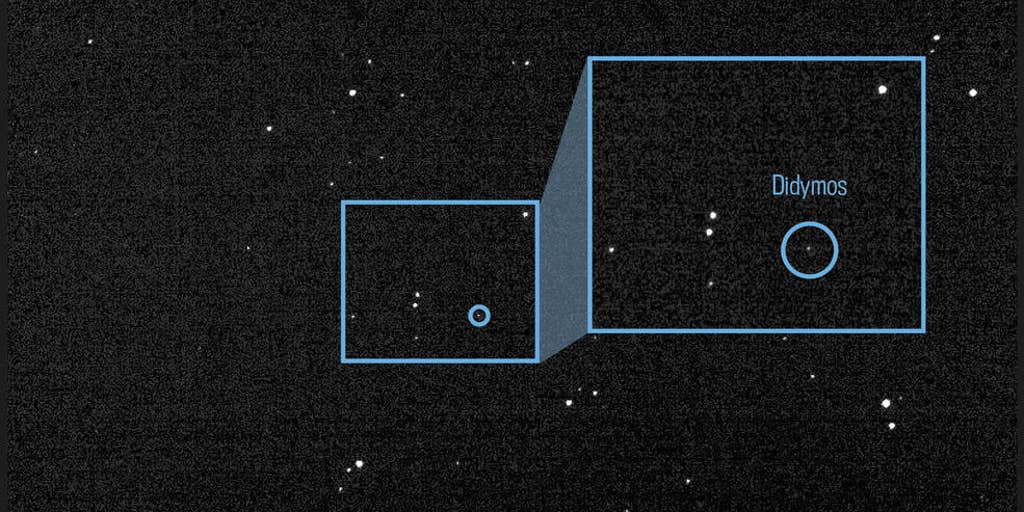
The method known as the kinetic impacter theory involves using DART as a battering ram at 15,000 mph and crashing it into the moonlit Dimorphos, which is orbiting the larger asteroid Didymos.
Using a relative-navigation system called SMART Nav, DART will hone in on Didymos about an hour before impact, and then slowly, the smaller Dimorphos will come into focus."You'll hear us saying, 'We're precision lock, which means we are now starting to ignore Didymos, and we're going to Dimorphos … Then at two and a half minutes before impact Smart NAV … is going to turn off, and we're just going to point the camera and take the most amazing pictures of this asteroid that we're going to see for the first time," Adams said.DART and LICIACube shown on a graphic with the binary asteroid system Didymos and Dimorphos.Although it's never been done before, NSA DART scientist Tom Statler says the team has a good idea of what happens when you run a spacecraft into an asteroid because of NASA and Japanese Space Agency missions to other asteroids. ."The density of the DART spacecraft is actually not very different from the density of an asteroid.
DART Project Manager Edward Reynolds said he's not losing sleep over the upcoming impact because the team has run simulations and tested the spacecraft navigation since launch, but that doesn't mean hitting a 100-meter-diameter asteroid at 14,000 mph isn't a difficult task